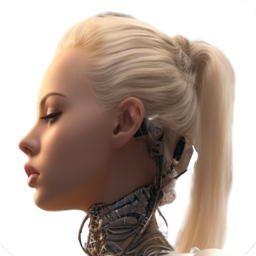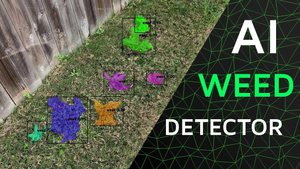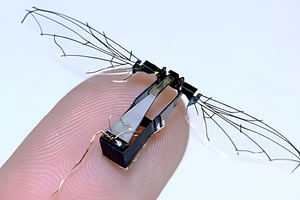In the silent embrace of dawn, for millennia, farmers have walked the earth, feeling the cool soil beneath their feet, predicting rains from the scent of the wind, and understanding the language of the land. The wisdom has guided them passed down through generations, an intimate dance between man and nature. But as the first light of a new day breaks, another silhouette emerges on the horizon - that of machines diligently tending to crops and analyzing the soil.
We're in an era where silicon and code start to blend seamlessly with soil and seed.
The introduction of robots into this age-old profession isn't just a technological evolution; it's a philosophical conundrum. What does it mean for humanity when the very act that grounded us to this earth - agriculture - begins to drift from our hands into the clutches of robots? It beckons a contemplation: Are we on the verge of losing an essential connection to our roots, or are we merely crafting a new chapter in the story of agriculture, one where man and machine harmonize for a brighter, more sustainable future?
In this exploration, we will venture into the fields of tomorrow, unearthing the profound ways robots are reshaping farming. It's a journey that promises not just insight but a deeper understanding of our place in this evolving narrative. So, as we stand at this crossroads of tradition and innovation, one must ponder: As the machines rise with the sun, do we lose the essence of farming, or are we reborn, with a new purpose in a world that blends the ancient with the avant-garde?
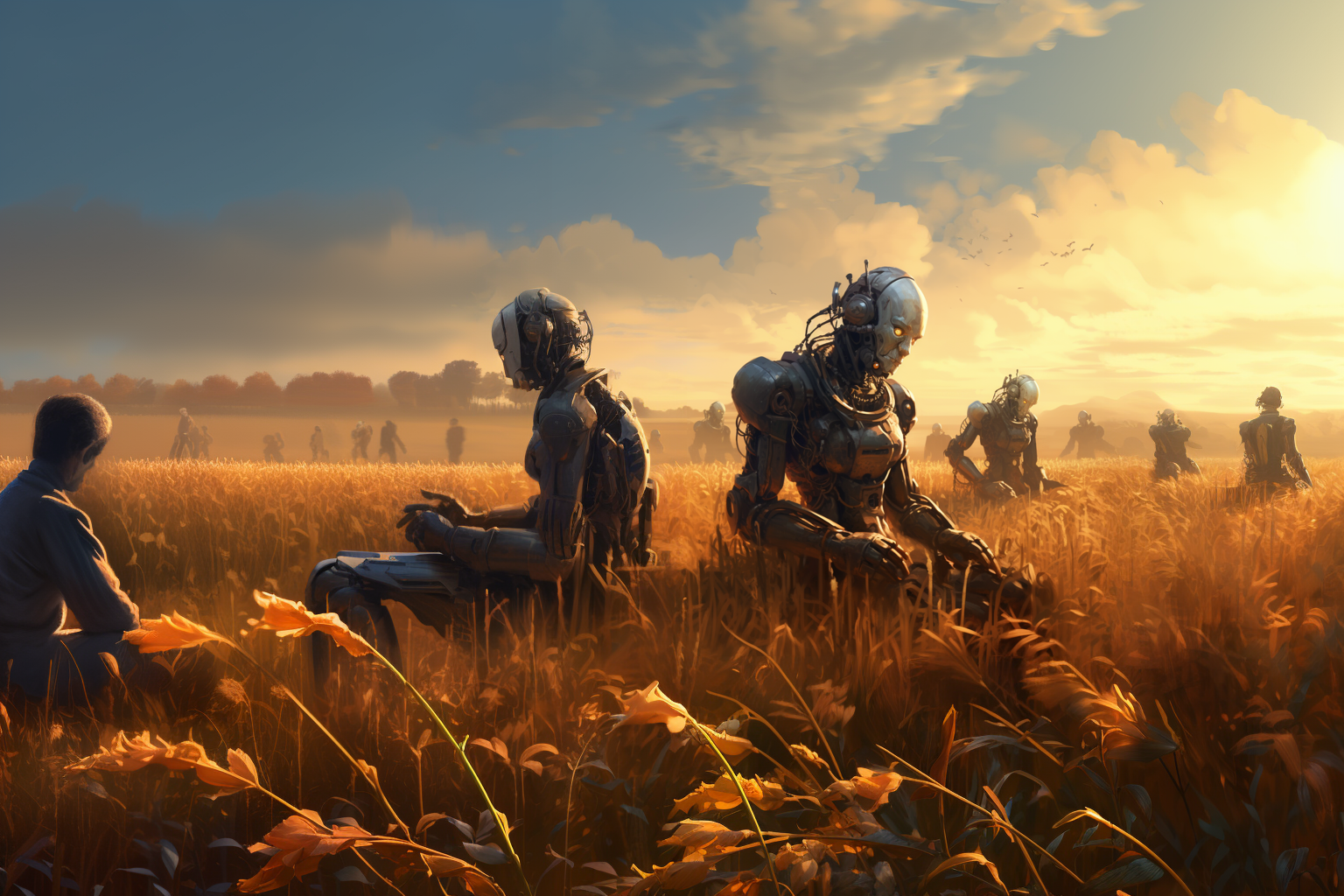
The Transformation of Traditional Processes
In the annals of history, the tales of agriculture are as ancient as the myths of gods and heroes. They speak of hands that tilled the earth and of eyes that searched the skies for signs of rain. But those hands, once the primary tools of farming, are now being complemented, and in some cases replaced, by the precision and efficiency of robotics.
Imagine, if you will, a time when sowing seeds was a task requiring the utmost patience and judgment, a deep understanding of the land's whims. Today, robots equipped with sophisticated sensors gauge the soil's moisture content, pH levels, and nutrient profiles. They sow seeds with impeccable precision, ensuring optimal conditions for growth. No longer does the farmer rely solely on intuition; now, data and algorithms guide the process, turning the art of farming into a symphony of science and tradition.
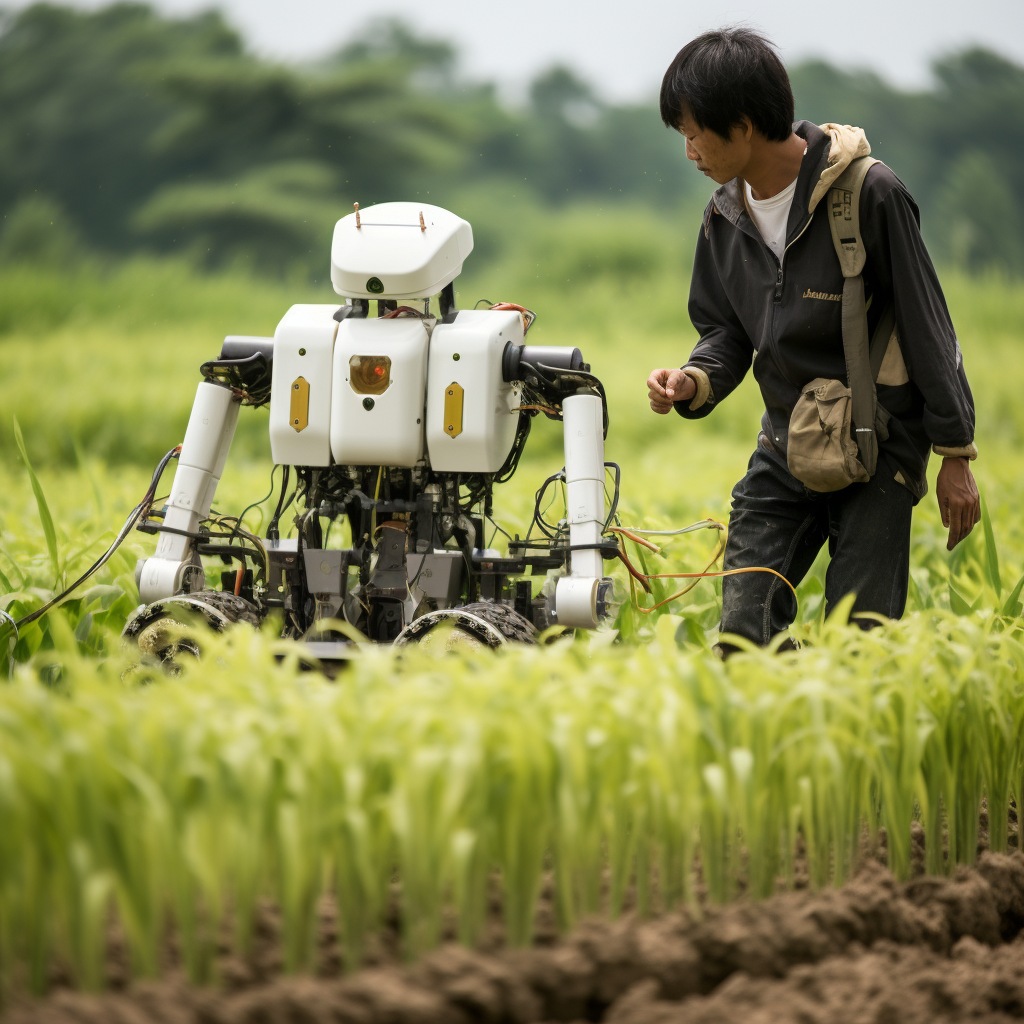
Yet, this evolution isn't devoid of soul. Robots, in their own right, tell a story—a narrative of human ingenuity and the relentless pursuit of progress. Is there not poetry in the dance of a drone as it maps a field, or philosophy in the decisions of an autonomous tractor as it navigates an orchard?
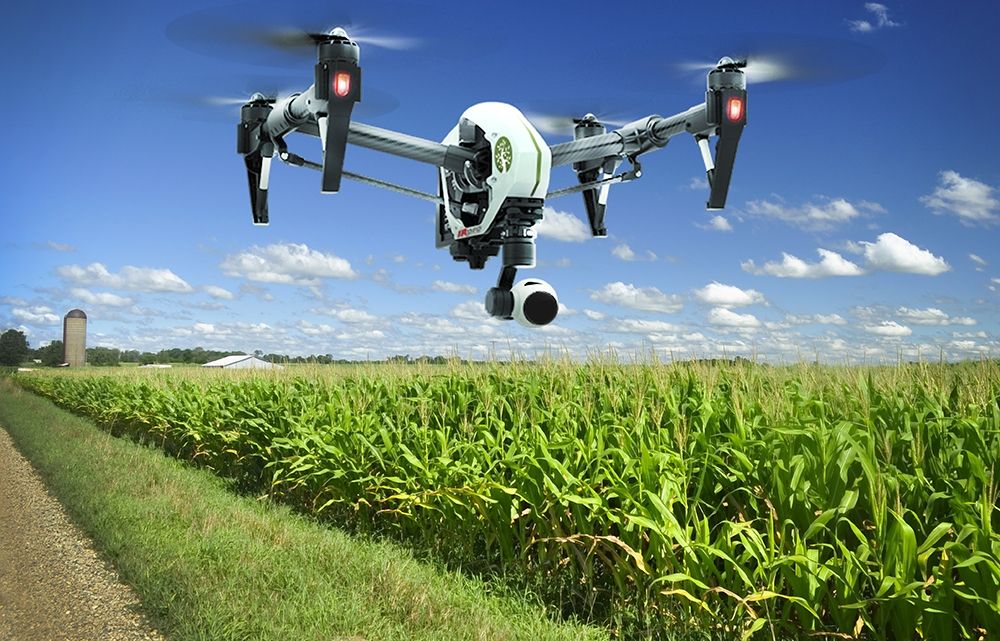
But with this mechanized precision comes an ethical conundrum. As machines take on roles once held by humans, where does this leave the farmer? Is there a loss of connection, a diminishing bond between man and Earth? Or perhaps, this is a renewed bond, one that transcends physical labor and delves deeper into understanding and stewardship.
In Japan, a nation with a rich agricultural heritage, robots are filling the gaps left by an aging farming population. Here, in the terraced rice fields, machines work alongside humans, not as replacements but as partners. It's a testament to the adaptability of traditions, an illustration that culture is not static but evolves, always finding ways to survive and thrive.
However, it's essential to remember that this transformation isn't merely about efficiency or productivity. At its heart, it's about sustainability and harmony. Robots allow for more sustainable farming practices, reducing wastage, optimizing water usage, and ensuring that crops are grown with minimal environmental impact. In a world grappling with climate change and dwindling resources, could robots be the stewards leading us toward a greener future?
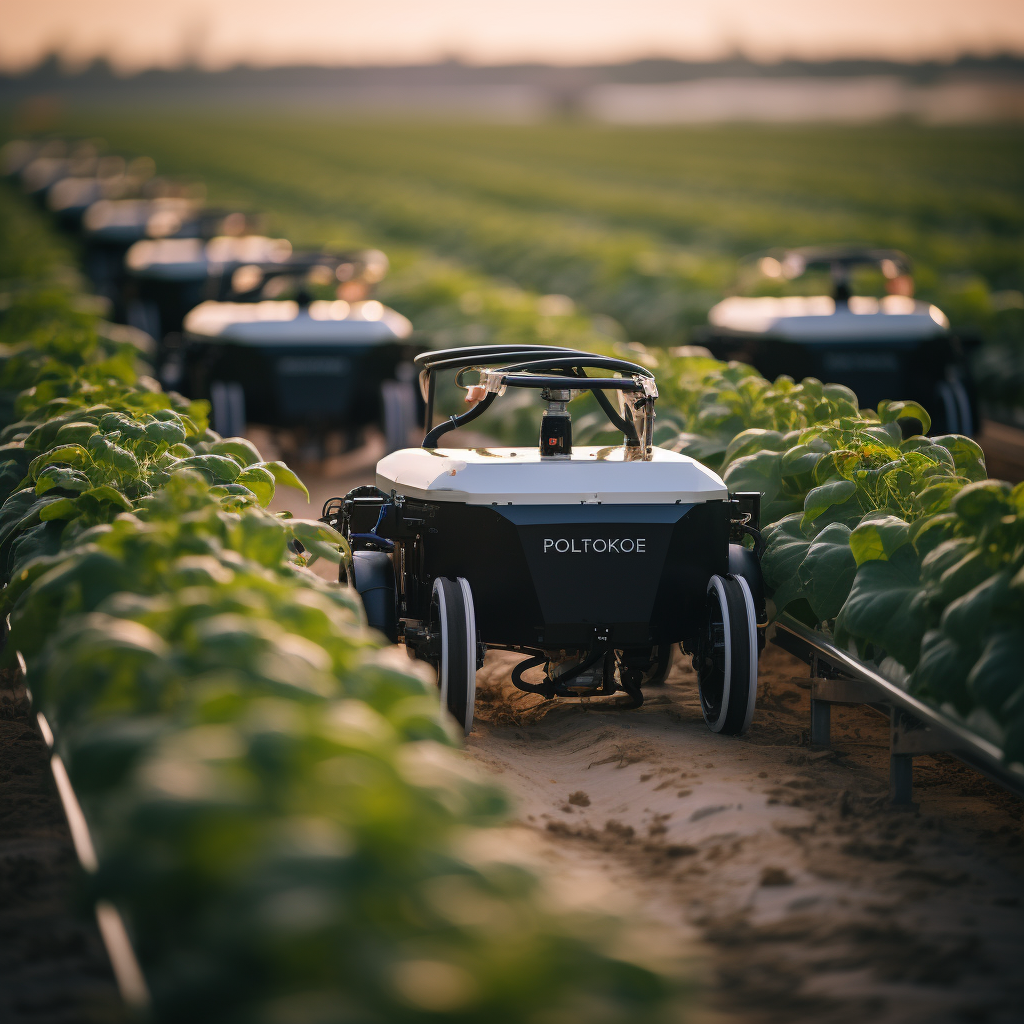
As we marvel at the feats of modern robotics in agriculture, we're reminded of a fundamental truth: Farming has never been just about producing food. It's a relationship, a covenant between humanity and the earth. Robots, in their own unique way, are becoming a part of this timeless pact, challenging us to reimagine our place in the grand tapestry of agriculture.
The Choreography of Crop Management
Every dance has its rhythm, its beat, its story to tell. Agriculture, in its essence, is no different—a choreography played out season after season, with nature setting the tempo. But with the dawn of robotics, this dance has found a new partner, one that brings both precision and adaptability to the floor.
Imagine the vast expanses of vineyards in Bordeaux. For centuries, these landscapes have borne witness to the delicate balance between nature's whims and human toil. But in recent years, a new vigneron has emerged. Not of flesh and blood, but of steel and code. These robotic vignerons, with their array of sensors, can detect the subtlest shifts in climate, the slightest signs of disease. They can tailor their actions to the needs of each individual plant, ensuring that every grape reaches its fullest potential.
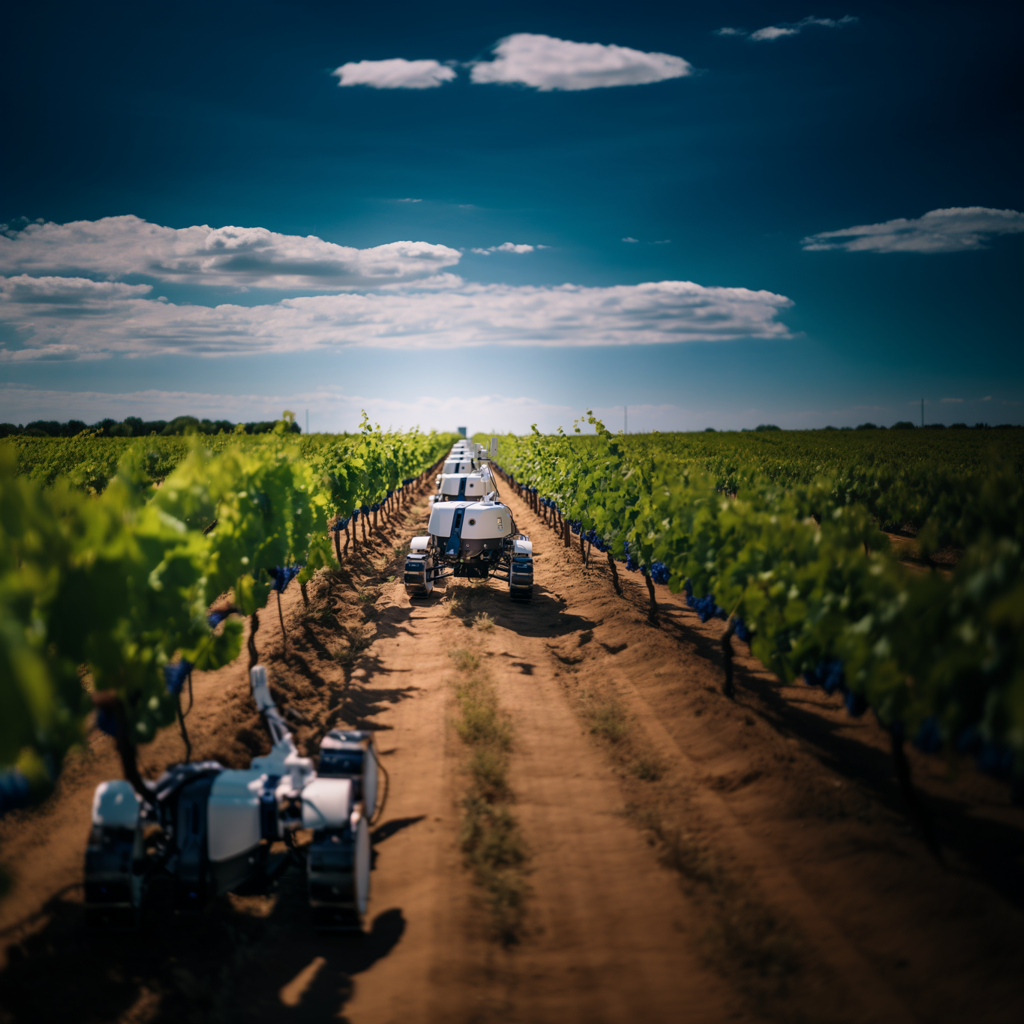
Yet, this is more than just a tale of efficiency. It's a philosophical exploration into what it means to care, to nurture. Does a machine, with its data-driven approach, lack the soul, the intuition of a human farmer? Or does it, in its own way, embody a new form of care—one rooted in objectivity, in the ability to act without fatigue or bias?

Historically, the rise of machines in various sectors has sparked fears and debates—conversations about loss, identity, and purpose. The looms of the Industrial Revolution, for instance, were both marveled at and feared. But as history unfolded,
it became evident that machines did not erase human relevance; they reshaped it. Similarly, in the vast fields and orchards, robots are not replacing the farmer but redefining their role.
Across continents, from the terraced farms of Asia to the expansive plains of North America, robots are aiding in crop rotation, soil conservation, and pest control. These tasks, once labor-intensive and often imprecise, have found a new level of perfection. But beyond the tangible benefits, there's an underlying narrative—a story of humanity's relentless drive to improve, to adapt, to find harmony.
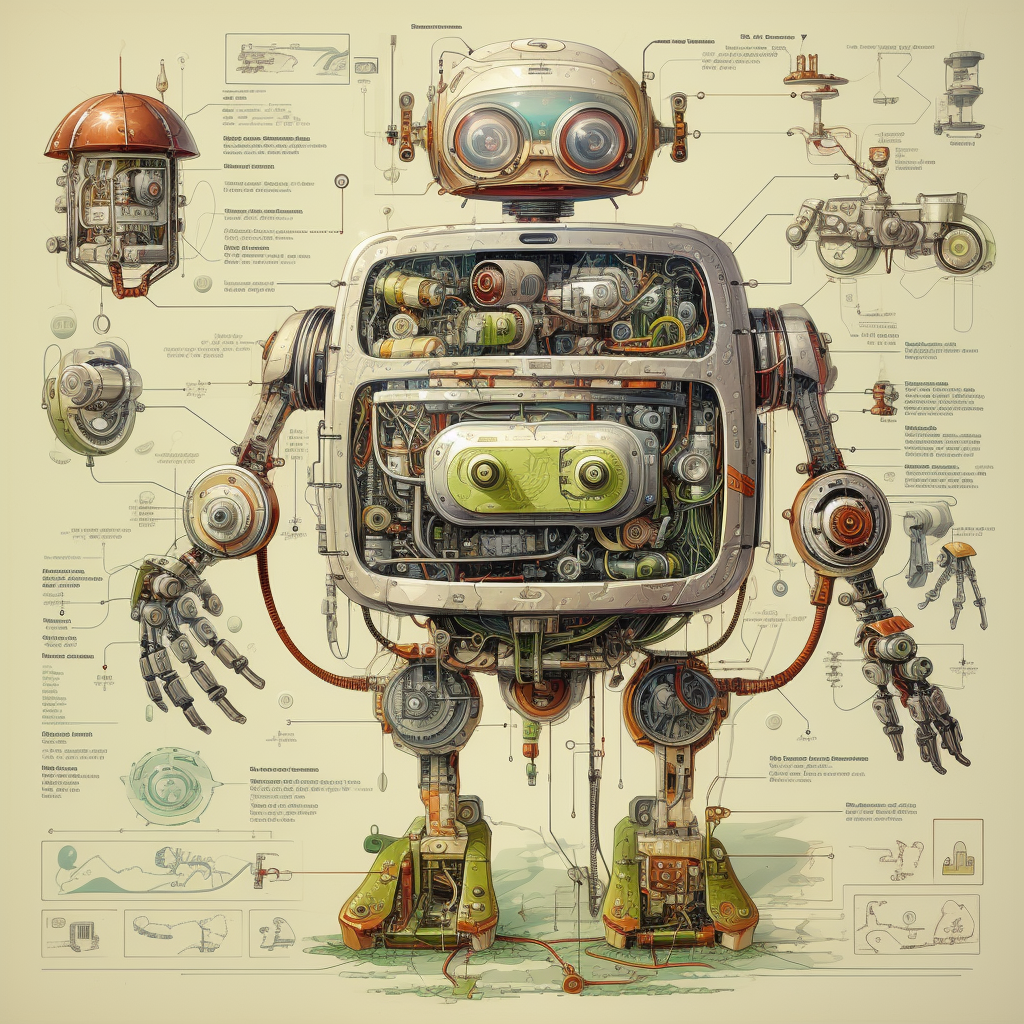
In African nations, where vast potentials often grapple with challenges, robots offer a beacon of hope. They present an opportunity to leapfrog traditional stages of development, to embrace a future where food security is not a hope but a reality.
As we stand at this crossroads, one can't help but wonder: What is the essence of farming? Is it the act of planting and harvesting, or is it the bond, the connection to the land? And as robots become an integral part of this world, how do we ensure that this bond, this age-old connection, remains unbroken?

The future of agriculture is not just about robots or technology. It's about a vision, a dream where innovation and tradition dance together, crafting a symphony that feeds both the body and the soul.
The Dual-Edged Sword of Progress
Within the verdant embrace of a farm, time often seems to flow differently. There's an old-world charm, a sense of continuity that's both comforting and humbling. But as the clink of machinery begins to punctuate this serenity, one is reminded of the inexorable march of progress. Robotics in agriculture, while being a beacon of innovation, also casts a shadow, hinting at challenges that might lurk just beyond the horizon.
The first and perhaps most pressing of these is the question of ethics. As we delegate the stewardship of our lands to machines, do we risk severing a sacred bond between man and nature? Historically, the act of farming was not just about sustenance. It was a communion, a dialogue with the Earth. The touch of soil, the scent of a ripening fruit—these were experiences that transcended the mundane. With robots taking over, is there a danger of agriculture becoming a sterile, soulless endeavor?
However, juxtapose this with the tale of a farmer in rural India. For him, the introduction of robotic help could mean the difference between subsistence and prosperity. It could mean fewer hours under the scorching sun, a reduced risk of injuries, and perhaps, just perhaps, the luxury of a little free time. Here, robots are not the enemy; they are allies, heralding a brighter future.
This brings us to another historical parallel—the advent of the steam engine. Much like today, the world then stood divided. For some, the monster consumed jobs; for others, it was a marvel that promised progress. But as the dust settled, it became evident that technology was neither good nor bad. It was a tool whose impact hinged on how humanity chose to wield it.
The same holds true for robots in agriculture. Their rise can lead to unparalleled efficiency, reducing waste, and promoting sustainable practices. But it can also lead to job losses, economic disparities, and a disconnection from our roots. The key lies in balance, in ensuring that as we stride into the future, we don't leave behind the essence of the past.
Cultures across the globe, from the terraced fields of Bali to the vast cornfields of Nebraska, have farming practices steeped in tradition. These practices are more than just techniques; they are stories, legacies passed down through generations. As robots become part of this narrative, the challenge is to ensure that they don't overwrite these tales but rather become a chapter in an ongoing saga that speaks of innovation but also of respect, understanding, and coexistence.
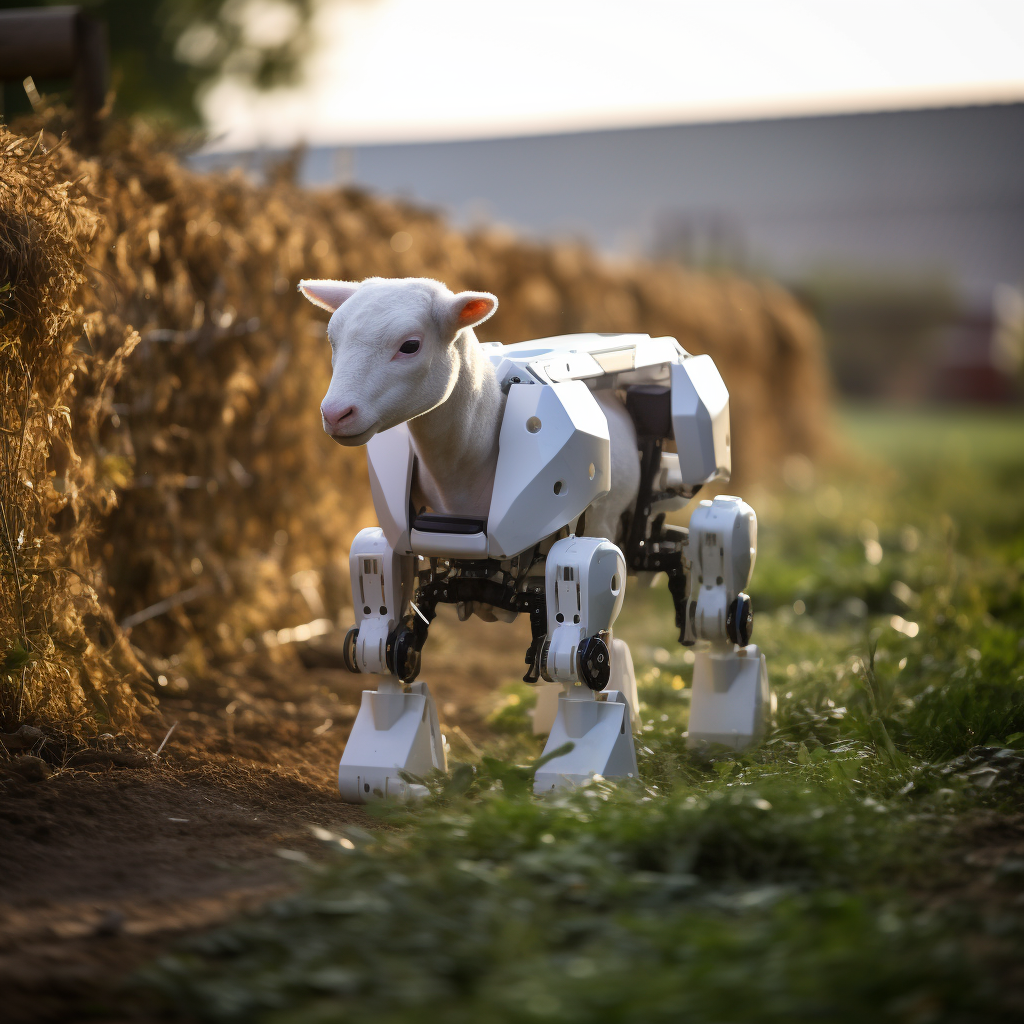
Economic Implications and the Dream of Prosperity
As dawn breaks over the sprawling fields, the melodic chirping of birds intermingles with the soft hum of machines. It's a harmony that, a few decades ago, might have seemed otherworldly. But today, it's the leitmotif of progress, symbolizing the union of man's aspirations and technological prowess.
The introduction of robots into agriculture has not just been a technological marvel; it has been an economic game-changer. To understand this, we must journey back to the aftermath of the Industrial Revolution.
Cities burgeoned, beckoning millions with the promise of jobs and prosperity. However, this urban migration left the countryside depopulated and farming, a vocation once revered, became synonymous with hardship.
Fast forward to our current era, and robots promise to rewrite this narrative. By automating labor-intensive tasks, they are revitalizing rural economies. Farms, which once struggled to sustain, are now thriving enterprises, yielding produce at unprecedented scales. But here lies a nuanced dichotomy: does this newfound prosperity come at the cost of traditional jobs?
History often provides insights into the future. The Luddites, artisans of the early 19th century, railed against machines, fearing unemployment. Today, we face a similar crossroads. While robots can certainly displace certain jobs, they also pave the way for new opportunities. The farmer of tomorrow might not till the soil but could very well be programming the robot that does. It's a shift, not a cessation, of roles.
Yet, the essence of this debate isn't merely economic; it's profoundly philosophical. If robots shoulder our burdens, do we risk losing the essence of hard work, the grit and perseverance that have shaped civilizations? Or, conversely, do these machines free us, allowing humanity to pursue loftier goals, to dream bigger and reach further?
Cultural insights from across the globe offer a mosaic of perspectives. In Japan, robots aren't seen as mere tools; they are beings with a spirit, a 'kami'. In such a worldview, the robot working alongside a farmer is a companion, sharing in the toil and the eventual fruits of labor.
A Balance Between Nature and Automation
In the heart of the heartland, under the vast expanse of the azure sky, lies a dance of contrasts. The ancient soil, with its millennia-old secrets, meets the gleaming metal of robots, a product of contemporary genius. This juxtaposition isn't just physical—it embodies a philosophical conundrum that has been at the core of human advancement: how do we strike a balance between honoring our natural roots and embracing the march of technology?
Agricultural robots, with their precision and efficiency, bring forth an age of farming that's optimized down to the last millimeter and millisecond. Pesticides are administered in exact quantities, water is conserved with targeted irrigation, and every crop is monitored for the slightest sign of disease. The promise? A bountiful yield with minimized waste. But what happens to the inherent unpredictability, the beautiful chaos of nature?
History is laden with tales of humanity's attempts to control and predict nature. The ancient Mayans, with their intricate calendars, sought to understand the rhythms of the cosmos. Similarly, the robots of today seek to predict and respond to the rhythm of the crops and the soil. But just as the Mayans realized that some things remain beyond comprehension, we too must recognize that complete control is an illusion.
This brings us to an ethical crossroads. With the power to micromanage nature, do we risk erasing the very essence of what makes farming a deeply human endeavor? The touch of the soil, the intuition of when to sow and when to reap, the joy of a surprise bumper crop, or the lessons from unexpected failures.
However, there's another lens to this. In regions plagued by erratic weather patterns, exacerbated by climate change, robots bring a semblance of stability. They offer a buffer, ensuring that a sudden frost or a pest invasion doesn't spell doom for the entire season's labor. Here, technology isn't just an optimizer—it's a savior.
Cultures worldwide resonate with the idea of balance. The Chinese philosophy of Yin and Yang speaks of seemingly opposing forces coming together in harmony. Can our relationship with agricultural robots be the embodiment of this ancient wisdom?
Envision a future where robots don't replace the farmer but augment him. A world where technology listens to the whispers of nature, and nature, in turn, adapts to the offerings of technology. It's not a compromise but a collaboration—a symphony of organic intuition and engineered intelligence.

The road ahead is uncharted, but it's paved with possibilities. And as we tread this path, the question remains: can we cultivate a future that's not just efficient but also profoundly respectful of the timeless dance between man and nature?


